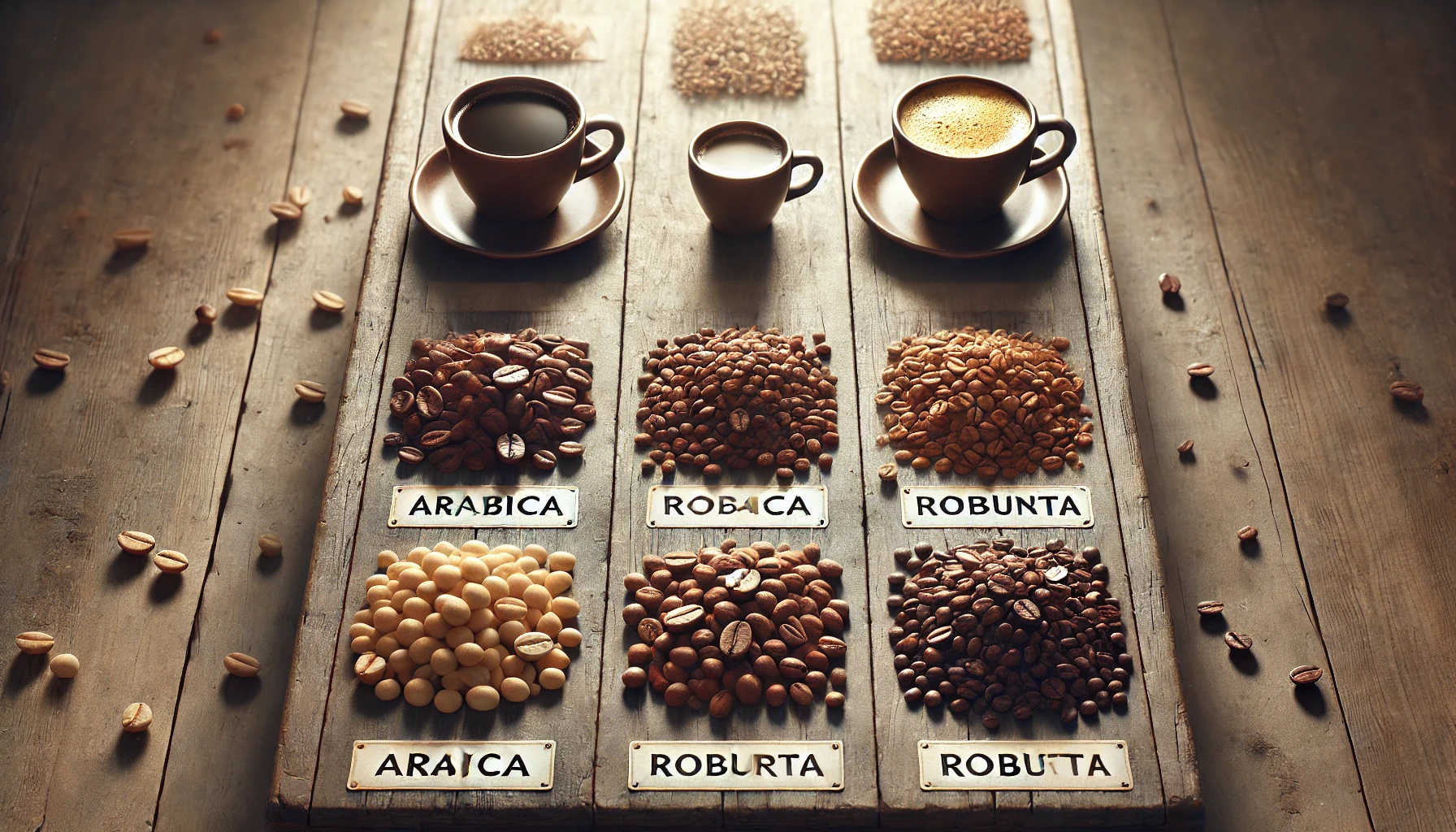If you’ve ever browsed a bag of coffee beans or stood in front of a café menu, chances are you’ve seen the words Arabica and Robusta. These are the two most common species of coffee plants, and while they both produce the drink we know and love, they’re very different in taste, cultivation, and quality.
Understanding the differences between Arabica and Robusta can help you choose coffee that better matches your preferences—whether you’re after bold intensity, smooth complexity, or something in between.
The Basics: What Are Arabica and Robusta?
Coffee comes from the seeds of plants in the Coffea genus. Out of over 100 species, only two are widely cultivated:
- Coffea arabica (Arabica)
- Coffea canephora (Robusta)
These two species account for over 95% of global coffee production.
- Arabica: Makes up about 60–70% of the world’s coffee
- Robusta: Accounts for roughly 30–40%
Let’s break down their key differences.
Flavor Profile
Arabica
- Taste: Smooth, sweet, and complex
- Common Notes: Fruit, floral, chocolate, nuts, caramel
- Acidity: Higher (often described as bright or citrusy)
- Mouthfeel: Light to medium body
Arabica is often considered higher quality because of its refined and layered flavor. It’s the bean of choice in most specialty coffees and third wave cafés.
Robusta
- Taste: Strong, bold, and bitter
- Common Notes: Earthy, woody, nutty, burnt
- Acidity: Low
- Mouthfeel: Full-bodied, heavier
Robusta has a harsher, more intense flavor, which is why it’s often used in instant coffee or espresso blends to add crema and kick.
Caffeine Content
One of the most significant differences between the two is their caffeine levels:
- Arabica: 1.2% – 1.5% caffeine
- Robusta: 2.2% – 2.7% caffeine
Robusta has nearly twice the caffeine of Arabica. This makes it more bitter—but also more resistant to pests and disease.
If you’re looking for a strong caffeine boost, Robusta delivers. If you want a gentler experience with nuanced flavor, go Arabica.
Appearance of the Beans
- Arabica Beans: Oval shape, curved crease, larger and flatter
- Robusta Beans: Rounder, smaller, straight crease
Most roasters can tell them apart visually. You might notice that specialty coffee bags often show more elegant-looking Arabica beans, while Robusta appears more rustic.
Where They’re Grown
Arabica
- Grown at higher altitudes (600–2,000m)
- More delicate plant, sensitive to pests and climate
- Famous origins: Ethiopia, Colombia, Brazil (also high-end producers like Kenya, Guatemala, and Panama)
Arabica thrives in cooler temperatures and requires more careful cultivation, which is why it tends to be more expensive.
Robusta
- Grown at lower altitudes (200–800m)
- Hardy and resilient
- Famous origins: Vietnam, Indonesia, India, parts of Africa
Robusta is easier to grow, yields more beans, and is cheaper to produce—making it attractive for large-scale commercial production.
Price and Availability
- Arabica: Higher price due to complexity, altitude, and lower yield
- Robusta: More affordable, mass-produced, and widely used in instant coffee
Premium brands often highlight “100% Arabica” on their packaging, while many supermarket blends contain a mix of Arabica and Robusta.
Common Uses
| Use Case | Arabica | Robusta |
|---|---|---|
| Specialty coffee shops | Preferred | Rare (except in espresso blends) |
| Instant coffee | Rarely used | Common |
| Espresso blends | Sometimes blended (20–30%) | Adds crema, strength, and bitterness |
| Home brewing | Ideal for pour-over, French press | Ideal for moka pot, espresso |
Robusta is especially valued in Italian espresso culture for its crema-producing properties and intensity, which cut through milk-based drinks like cappuccinos.
Which One Should You Choose?
Choose Arabica if:
- You value flavor complexity and aroma
- You enjoy lighter, smoother coffee
- You brew using manual methods like pour-over, Chemex, or drip
- You want to explore coffee origins and tasting notes
Choose Robusta if:
- You like strong, bold coffee with bite
- You’re mixing with milk or cream
- You want high caffeine content
- You prefer espresso or moka pot preparation
Or, try blends that combine the best of both worlds—Arabica for complexity, Robusta for strength and crema.
Final Thoughts: Know What’s in Your Cup
The next time you pick up a bag of coffee beans or order a shot of espresso, check what type of beans are being used. Understanding the difference between Arabica and Robusta empowers you to find the perfect cup for your preferences.
It’s not about which one is better—it’s about what you enjoy most. Whether you’re a smooth-sipping Arabica fan or a caffeine-craving Robusta lover, knowing the difference helps you appreciate the craft behind every brew.
